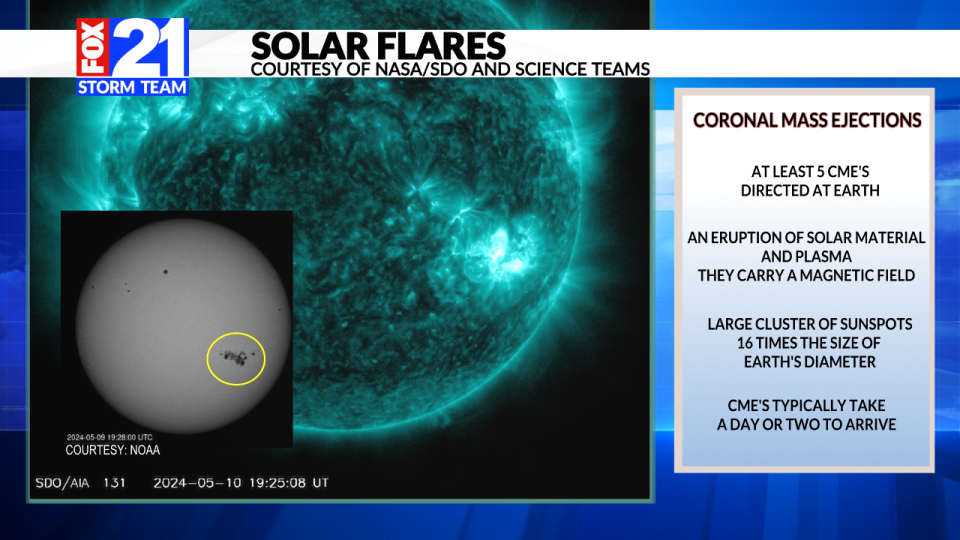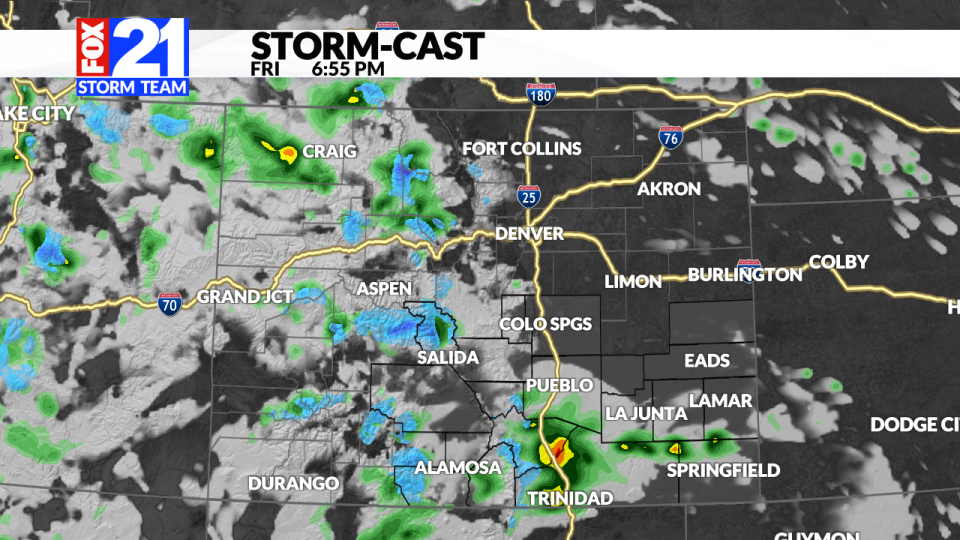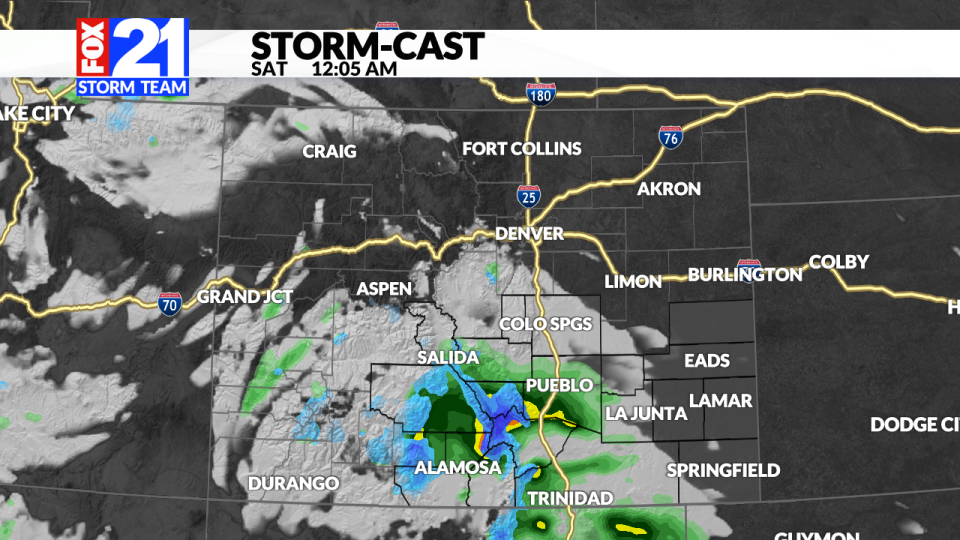Colorado might be able to see the Northern Lights Friday
(SOUTHERN COLORADO) — The Aurora Borealis just might make a trip to Colorado on Friday evening. A geomagnetic storm, classified as a G4, will interact with Earth’s magnetic field over the next couple of days. The Space Weather Prediction Center (SWPC) maxes out the scale at G5, so activity is expected to be high with this event.

NOAA, with the SWPC, released their forecast viewing map for the Northern Lights on Friday evening (above). They predict that the view line, in red, may extend as far south as Northern Colorado. It should be noted that this line signals where the SWPC believes the lights will be visible just on the northern horizon.
Other sources have the viewing line going much further south to areas like Texas and Alabama.
Geomagnetic storms at this intensity do not happen often at all. The planetary-k index is up over 8 for this event with a maximum value of 9 possible on the scale. The higher values indicate more energy interacting with our magnetic field, and that correlates to a more active aurora.

The aurora is directly linked to the sun, or at least the sun’s behavior. Scientists are constantly observing the sun and over the last couple of days, they’ve noticed a large group of sunspots and a series of solar flares. This increase in behavior usually correlates with Coronal Mass Ejections (CME’s).
CME’s are an eruption of solar material that carry their own magnetic field. The Space Weather Prediction Center notes that at least 5 CME’s were detected recently and are currently directed towards Earth. These CME’s will interact with each other on their journey to Earth and set the stage for a potentially brilliant Aurora. Typically CME’s take a day or two to reach Earth from the sun; their activity was detected around May 9.
Auroras are typically strongest along Earth’s poles due to how our magnetic field connects from end to end. Once the CME’s reach our magnetic field the energy associated with them will disperse across our atmosphere and interact with the various gasses.
Green colors (most common) interact with Oxygen at the lower and mid levels
Dark red and pink colors interact with Nitrogen at the lower levels
Blue and Purple bounce off of Hydrogen and Helium but can be more difficult to see
The Northern Lights may very well reach Colorado Friday night with some lingering activity into Saturday and Sunday—but there’s a problem: clouds.

Colorado is sitting under an upper-level cut-off low right now, which means there is a lot of unsettled weather in the area. Isolated showers and storms will be possible over the next few days and with those precipitation, chances we typically see an increase in cloud cover.
The good news is that models appear to be giving us a brief window of sky visibility Friday night depending on where you live. If you’re okay with traveling a bit there are a few places you can go to have a better chance to see the aurora.
Just after dinner time models are favoring counties north of Highway 50 and east of I-25 for the least amount of cloud cover. Areas such as Lincoln, Kiowa, and Kit Carson counties will have a good shot. Areas along I-70 would be a good bet too.

Cloud cover becomes a bit more abundant around midnight so play your cards carefully.
Just remember to go beyond the city lights and let your eyes adjust to the darkness! The northern horizon just might deliver if everything works out.
For the latest news, weather, sports, and streaming video, head to FOX21 News Colorado.

